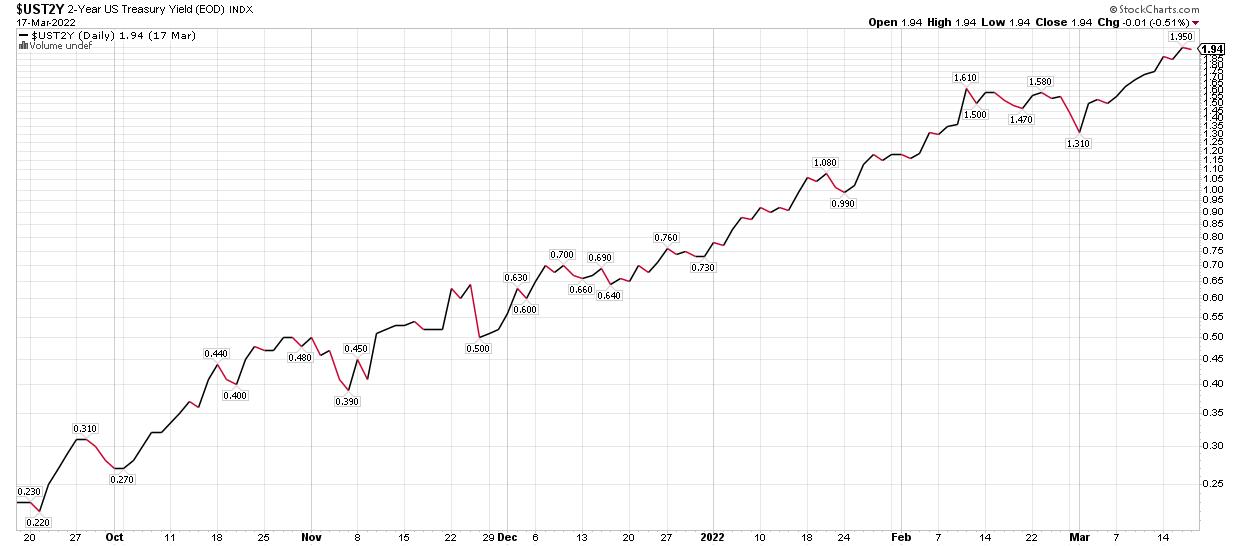The Fed hiked its policy rate by a quarter-point this week. The May FOMC meeting will be more interesting — odds suggest it could be either another 25 bps or a half-point increase. The market has already moved.
The U.S. 2-Year Treasury rate was barely above 0.2% in the third quarter last year; now, it is near 2%. With such a quickly-changing interest rate situation, clients and even advisors can be confused about what yield measurements to use when gauging bond funds.
U.S. 2-Year Treasury Yield

Look at the YTM
The effective yield to maturity (YTM) is the preferred indicator. It basically takes a bond's current price and assumes all future coupon payments are made along with the final return of principal. It's not so helpful to look at the trailing twelve months' total distribution, since you can never be quite sure of the timing of those cash flows. Moreover, the SEC yield — which is used to standardize yields on money market funds net of fund expenses — only uses the last 30 days of distributions, so that is not ideal. Finally, just using a bond indenture's stated yield as a gauge of a market-based interest rate is no good either.
A Relative Opportunity in Near-Dated Treasuries?
What can advisors do right now? You might consider parking client cash in a short-term Treasury fund, yielding near 2% given the shape of the Treasury yield curve. While very short-term rates inched up thanks to the Fed, many argue that money market funds and savings & checking accounts will be slow to see annual percentage yield inch higher.
Duration Risk
What's interesting about the yield curve right now is that you are not compensated for extending duration. For example, the 20-year and 30-year are not that far apart on their respective interest rates. In fact, the 2-year rate is above the 30-year rate. So, why take so much more duration risk? The answer to that is, if there is a dramatic drop in market rates, the long-dated bonds will move sharply higher.
But, right now, short-term Treasury bond ETFs have effective durations (as you might expect) of roughly two years. A 30-year Treasury STRIP might have an effective duration of 10 or 15 times that amount. You cannot park your cash way out there on the timeframe spectrum due to the extreme interest rate risk.
Conclusion
I do assert, though, that taking a tiny bit of interest rate risk with a 1-3 year Treasury fund is probably fine. Of course, you can still see your principal drop should near-dated rates rise dramatically. Also, money market yields will eventually turn higher once the Fed reaches their terminal policy rate — which market participants see near 2.6% by the third quarter next year.
Mike Zaccardi, CFA, CMT
Investment Writer, Zaccardi LLC
